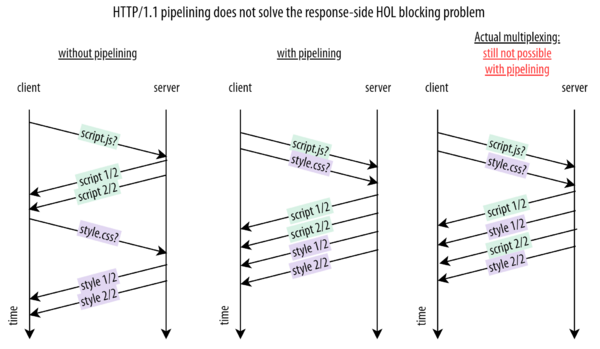无编辑摘要 |
无编辑摘要 |
||
| 第7行: | 第7行: | ||
In [[HTTP/3]], multiplexing is accomplished via [[QUIC]] which replaces [[TCP]]. This further reduces loading time, as there is no [[Head-of-line blocking]] even if some packets are lost. | In [[HTTP/3]], multiplexing is accomplished via [[QUIC]] which replaces [[TCP]]. This further reduces loading time, as there is no [[Head-of-line blocking]] even if some packets are lost. | ||
[[Image: | [[Image:Bonus1_H1_pipelining.png|600px|border]] | ||
2023年12月8日 (五) 07:17的版本
HTTP pipelining is a feature of HTTP/1.1, which allows multiple HTTP requests to be sent over a single TCP connection without waiting for the corresponding responses.
HTTP/1.1 requires servers to respond to pipelined requests correctly, with non-pipelined but valid responses even if server does not support HTTP pipelining. Despite this requirement, many legacy HTTP/1.1 servers do not support pipelining correctly, forcing most HTTP clients to not use HTTP pipelining.
The technique was superseded by multiplexing via HTTP/2, which is supported by most modern browsers.
In HTTP/3, multiplexing is accomplished via QUIC which replaces TCP. This further reduces loading time, as there is no Head-of-line blocking even if some packets are lost.
